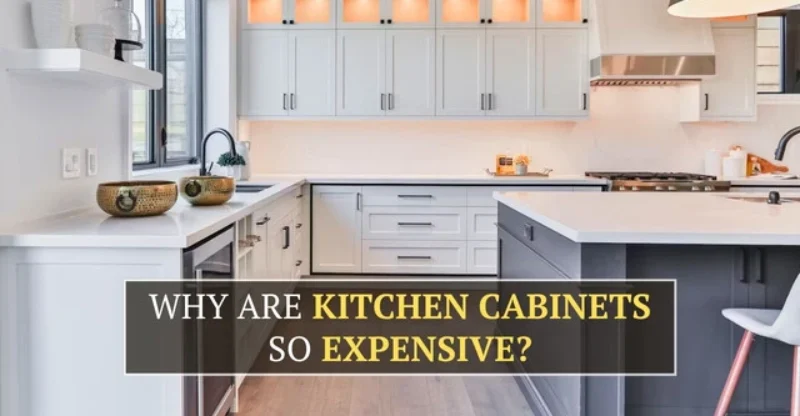Why Are Kitchen Cabinets So Expensive? (Tips to Cut Costs)
Are you in the process of planning a kitchen renovation and wondering why kitchen cabinets are so expensive?
Understanding the underlying factors that contribute to the high cost of kitchen cabinetry can help you make informed decisions and navigate the pricing structure.
In this section, we will explore the reasons behind the expensive nature of kitchen cabinets, providing valuable insights to aid you in your home improvement journey.
Factors Affecting Kitchen Cabinet Prices
In the world of kitchen renovations, understanding the factors that contribute to the cost of kitchen cabinets is crucial for making informed decisions.
From high-end cabinet costs to budget-friendly alternatives, it’s essential to explore the various factors that influence kitchen cabinet prices.
Additionally, comparing cabinet materials and prices can provide valuable insights into the options available to you.
High-End Cabinet Costs
When it comes to high-end cabinets, the price is often reflective of the quality of materials used, intricate designs, and superior craftsmanship.
These cabinets are typically made from premium materials like solid wood, durable hardware, and customized finishes.
While high-end cabinets offer exceptional aesthetics and durability, they come at a higher price point due to the superior quality and craftsmanship involved in their production.
However, it’s essential to evaluate whether the added cost is justified based on your specific needs and preferences.
Budget-Friendly Cabinet Alternatives
Fortunately, there are budget-friendly alternatives available for those looking to save on kitchen cabinet costs.
These options may include ready-to-assemble (RTA) cabinets, stock cabinets, or cabinets made from more cost-effective materials.
While they may not offer the same level of customization or premium finishes as high-end cabinets, they can still provide functional and visually appealing solutions for your kitchen.
When opting for budget-friendly alternatives, it’s important to consider the durability and longevity of the materials used.
Additionally, you can explore creative design choices or incorporate stylish hardware to enhance the overall look and feel of your kitchen.
Comparing Cabinet Materials and Prices
Another critical aspect of navigating kitchen cabinet prices is comparing different materials and their associated costs.
Different materials, such as solid wood, plywood, medium-density fiberboard (MDF), or particleboard, come with varying price points and durability levels.
By comparing the pros and cons of each material, you can make an informed decision based on your budget and desired quality.
It’s essential to consider factors such as resistance to moisture, durability, and overall aesthetic appeal when choosing the right cabinet material for your kitchen.
Below is a comparative analysis of common cabinet materials and their average price range:
| Material | Average Price Range |
| Solid Wood | $150 – $500 per linear foot |
| Plywood | $100 – $300 per linear foot |
| MDF | $80 – $200 per linear foot |
| Particleboard | $60 – $150 per linear foot |
These price ranges are approximate and may vary depending on factors such as geographical location, customization options, and cabinet brand.
By comparing the prices of different materials, you can find the right balance between your budget and desired quality, ensuring you make a well-informed decision when investing in kitchen cabinets.
Tips for Saving on Kitchen Cabinets
If you’re planning a kitchen renovation, finding affordable kitchen cabinet options is key to staying within your budget.
By implementing these tips, you can save money on kitchen cabinets without compromising on quality.
1. Consider Ready-to-Assemble Cabinets
Ready-to-assemble (RTA) cabinets can be a cost-effective alternative to custom-built cabinets. These cabinets are shipped unassembled, which can significantly reduce their price.
With a little DIY effort, you can assemble and install them yourself, saving on labor costs.
2. Explore Cabinet Refacing
If the structure of your existing cabinets is still in good condition, consider cabinet refacing instead of replacing them entirely.
Cabinet refacing involves replacing only the doors, drawer fronts, and hardware, giving your kitchen a fresh look at a fraction of the cost.
3. Shop for Sales and Discounts
Keep an eye out for sales and discounts on kitchen cabinets. Many retailers offer seasonal promotions or clearance sales where you can find great deals on quality cabinets.
Additionally, consider checking online marketplaces or local classifieds for used cabinets that are still in good condition.
4. Choose Stock or Semi-Custom Cabinets
Stock and semi-custom cabinets are often more affordable than fully custom cabinets. While they may have limited design options compared to custom cabinets, they still offer a wide range of styles and finishes to choose from.
Look for manufacturers that offer competitive prices without compromising on quality.
5. Compare Different Materials
When it comes to kitchen cabinets, different materials come with different price tags. While solid wood cabinets may be more expensive, there are budget-friendly alternatives such as laminate or thermofoil that can still provide a stylish look at a lower cost.
Consider the durability and maintenance requirements of each material before making a decision.
6. DIY Installation
Hiring professional installers can add a significant amount to your overall cabinet costs. If you’re handy and have some basic carpentry skills, consider installing the cabinets yourself.
Just make sure to thoroughly research the installation process and follow the manufacturer’s instructions to ensure a successful installation.
7. Maximize Storage Efficiency
Planning your cabinet layout effectively can help you minimize the number of cabinets you need, reducing costs.
Utilize space-saving features such as pull-out shelves, drawer organizers, and vertical dividers to maximize storage efficiency.
Carefully consider your storage needs to avoid overbuying cabinets.
| Tips for Saving on Kitchen Cabinets | Budget Impact |
| Consider Ready-to-Assemble Cabinets | Significant cost savings |
| Explore Cabinet Refacing | Partial savings compared to full cabinet replacement |
| Shop for Sales and Discounts | Varies, potential for significant savings |
| Opt for Stock or Semi-Custom Cabinets | Moderate savings compared to fully custom cabinets |
| Compare Different Materials | Potential for significant cost differences |
| DIY Installation | Significant cost savings |
| Maximize Storage Efficiency | Savings achieved by reducing the number of cabinets needed |
Conclusion
Understanding the reasons behind the high cost of kitchen cabinets is crucial when planning your home renovation.
By analyzing the different factors that contribute to their expenses, you can make informed decisions that fit your budget.
Remember that while kitchen cabinets can be pricey, there are still ways to find affordable options without compromising quality.
Exploring alternative choices and materials is key to finding cost-effective solutions. Consider opting for budget-friendly cabinet alternatives that maintain durability and style. Additionally, comparing prices and materials can help you identify the best value for money.
Keep these insights in mind as you embark on your renovation journey and transform your kitchen into a space that reflects your personality and meets your functional needs.
FAQ
kitchen cabinets typically account for around 30-35% of the total cost of a kitchen remodel, making them the single most expensive component.
Consider ready-to-assemble (RTA) cabinets, which are shipped in a flat pack and assembled on-site. Another option is refacing or refinishing, where the existing cabinet frames are updated with new doors and finishes.
Not necessarily. While expensive cabinets may boast premium materials and craftsmanship, it’s essential to evaluate factors like brand reputation and customer reviews to ensure quality.



